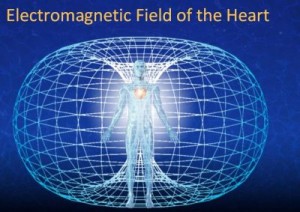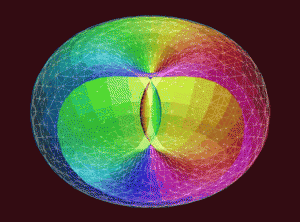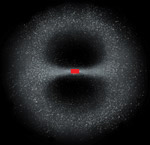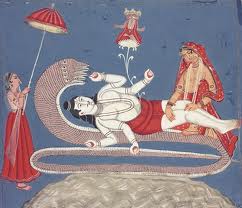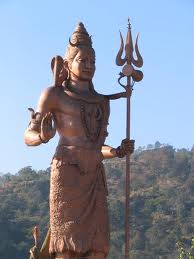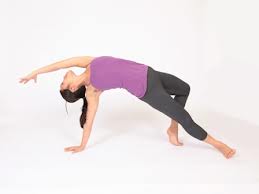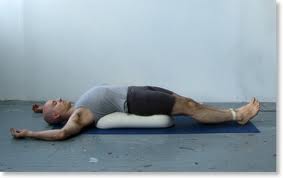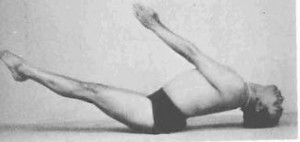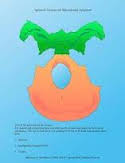This is my favorite bumper sticker these days. Many layers of meaning are hidden in this slice of pop culture, especially for the yogi/somanauts moving into the ‘energetic’ and ‘field’ realms of consciousness. Explore these possibilities with playfulness, but feel their depth simultaneously. These energies are very old and well proven through millions of years of experience.
As we see in this picture, the field lines of a bar magnet take on the shape of a torus. (See yoga and the torus.) If we imagine the N pole (not Z) as our head and the south pole as our tail, or 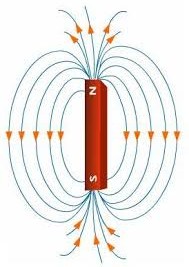 the N as the crown chakra opening to the heavens and the S as the root chakra opening to the earth, we find a flowing coherent field of energy. If we can imagine alternating current, with the N and S reversing periodically, we find a more complex field current traveling both directions.
the N as the crown chakra opening to the heavens and the S as the root chakra opening to the earth, we find a flowing coherent field of energy. If we can imagine alternating current, with the N and S reversing periodically, we find a more complex field current traveling both directions.
If we transfer this onto the modern human body and its energy field, we will find a hyperactive North pole (the head) and a seriously malnourished South pole, the tail, and very little coherence. Too much talking/thinking/whining keeps the brain too hot. To much sitting, compressing and collapsing keeps the tail stuck and unconscious. In the esoteric teachings of yoga, the kundalini energy is said to be sleeping, like a coiled serpent, at the base of the tail. Wagging more will help wake up this snakey energy and barking less will help pacify the brain, thus bringing more balance and coherence to the human energy field. Lets examine some tails from nature to see if we can learn some ‘waggly’ hints from our animal friends and experience more coherence as a result.
Check out the tri-furcation of the muladhara in this jumping gecko. Full extension backwards of both legs and toes and the tail balance the forward extension of the head, front legs and toes. A powerful coherent field is seen. If humans could find this third pathway, the tail, to supplement to full leg action we would have a way to balance the hyperactive human brain. Notice how the opposite orientations create a dynamic aliveness in every cell.
This guy from the jack family has a beautiful blue forked tail. Fish invented vertebrae and thus to be able to move like a fish is to have a very free spinal column. The motor is in the tail, not the head. Make your fish tail undulate from sid to side. Trikonasana and parsvakonasna are good poses to practice the fish tail action as they are lateral poses.
This red tailed hawk uses her tail to help create stability, to steer, or to help change altitude. Although we don’t fly, whenever we use our arms we can widen our tails to help maintain an energetic balance. Birds can fan their tails which is a totally cool thing to do. Work on this any way your imagination allows.
Our dolphin friends use their tails to launch themselves through the water and air. As they are mammals, their concentrated power creates elegant flexion/extension waves. Forward and backward bends will feel more open and effortless when the tail is free to use its power and the rest of the spine can be more receptive. Most of us way over-use the spinal muscles. Be more dolphin like in these poses.
The kangaroo shows how the tail allows an amazing balance in the spinal energy, freeing up the head to see, smell and eat without any creating any unnecessary tension in the neck. Energy does not get stuck in the hips either because of the tail support. Grow your self a kangaroo tail and feel where it can take you. Feel the muladhara opening and breathing. Drop your brain and rest in the infinite spaciousness of the heart.
Finally, our friendly scorpion shows us how to really extend the spine. This is crucial for backbending as most of us constrict the root of the spine in an attempt to open the hip joints. Notice his spine extending through his tail.
Here is B.K. S in two variations of the scorpion. Notice how he uses his legs as an extension of his tail to create length. He also lengthens through his crown chakra as well to complete the circuit. What is extraordinary about Mr. Iyengars backbends is the clarity of the core line. Follow the curve from knees to the root of the jaw. Simple, elegant relaxed and open, just like the scorpion. Be careful in practicing this pose. It can sting!
What is extraordinary about Mr. Iyengars backbends is the clarity of the core line. Follow the curve from knees to the root of the jaw. Simple, elegant relaxed and open, just like the scorpion. Be careful in practicing this pose. It can sting!





